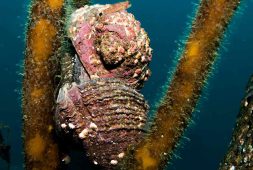
The Candida auris fungus has the ability to survive on surfaces for several weeks, making it a persistent threat. The Centers for Disease Control and Prevention (CDC) has classified this fungus as an “urgent threat” due to its rapid spread in healthcare facilities and its potential to cause fatal infections.
In a recent report, the CDC expressed concern over the escalating rate of Candida auris infections in U.S. healthcare facilities. This emerging fungus is often resistant to multiple antifungal drugs, posing a significant challenge for treatment. Moreover, it has been associated with severe infections that have high mortality rates.
A study published in the Annals of Internal Medicine on March 21, utilizing national surveillance data, revealed a steady increase in clinical cases each year since 2016. The most alarming rise in cases occurred between 2020 and 2021.
From 2019 to 2021, the number of active C. auris infections nationwide surged from fewer than 500 to nearly 1,500. Additionally, there was a threefold increase in screening cases, where the fungus was detected but not causing infection, resulting in a total of over 4,000 cases in 2021. Although the final figures for 2022 are not yet available, the CDC has indicated a further increase in cases during that year.
Dangerous Candida auris: A Nationwide Concern
C. auris, a fungal infection, has now been found in over half of the states in the United States, with 17 states reporting their initial cases between 2019 and 2021.
The Centers for Disease Control and Prevention (CDC) note that the growth rate of this fungus has been extraordinary since its initial discovery in Japan in 2009. Interestingly, the name “Auris” is derived from Latin and refers to the location where it was first detected, which is the ear.
The reach of C. auris extends beyond the United States, as cases have now been documented in more than 30 countries.
“It is concerning to see so many cases and transmission occurring,” said Meghan Lyman, MD. She is a medical officer with the CDC as well as the lead author of the study. “The fungus mostly affects a subset of the population that is very sick at baseline. These are some of the most vulnerable individuals, and it highlights gaps in our ability to stop the spread of C. auris and other emerging pathogens.”
C. auris Has Become Threatening for Vulnerable Groups, but General Public is Exempted
Outbreaks of the fungus have been observed in healthcare facilities and nursing homes, with transmission occurring through contact with infected patients as well as contaminated surfaces or equipment. According to the CDC, when a C. auris infection becomes invasive and spreads to the bloodstream, heart, or brain, the mortality rate reaches one in three patients.
Dr. Lyman explains that individuals at a higher risk of developing severe illness include patients relying on ventilators, those with invasive medical devices such as feeding tubes or central lines, individuals who have undergone prior treatments with antibiotics or antifungal medication, and those with extended or frequent healthcare stays.
For most people, though, the fungus hasn’t become a health threat just yet. “For the general population, I would not be alarmed,” says Stanley Deresinki, MD. He is a clinical professor of medicine in the division of infectious diseases and geographic medicine at Stanford University in California. He also wasn’t part of the study.
Deresinki further explains that although people can acquire the fungus on their skin without experiencing an infection, they can still transmit the fungus to others. Therefore, even individuals without any symptoms can serve as a source of transmission. To curb the spread, the CDC emphasizes the importance of screening in order to identify patients carrying the fungus and implement infection prevention measures accordingly.
To prevent transmission among at-risk populations or individuals in close proximity to high-risk individuals, practicing good hand hygiene and maintaining cleanliness are crucial. The CDC recommends that individuals who are in close contact with vulnerable people should cleanse their hands with hand sanitizer or soap and water before visiting them.
C. auris is highly resilient and can survive on surfaces for extended periods, increasing the likelihood of its spread. One possible factor contributing to its robustness is climate change. “C. aurisappears to be more tolerant of higher temperatures, so there is speculation that its emergence may be related to climate change,” said Dr. Deresinki.
A Fungal Infection Has Become Resistant to Treatment
C. auris has become a significant worry for public health officials due to its resistance to commonly prescribed antifungal medications used for treating similar infections.
According to the most recent study, there has been a threefold increase in cases resistant to echinocandins, the primary antifungal medication recommended for C. auris infections, in 2021 compared to the previous year.
Deresinki sees this as an example of the way fungus and bacteria work and evolve to eventually become resistant to treatments available. “There are new antibiotics and antifungals in development, but bacteria and fungus are by and large outracing the treatments,” he says.
Deresinki states that while there has been an increase in antifungal drug-resistant cases, the majority of available agents remain effective. In situations that are difficult to treat, doctors may consider a combination of medications or explore emergency access to experimental agents that are currently undergoing review.
“The increasing number of cases and transmission of C. auris is concerning and highlights the need for improved detection of cases and infection control to prevent spread,” said Lyman. “There have been areas or facilities that have successfully prevented or contained spread by implementing these measures. This is a cautionary tale, and improvements made to prevent spread of C. auris will also help with the next emerging threat.”



